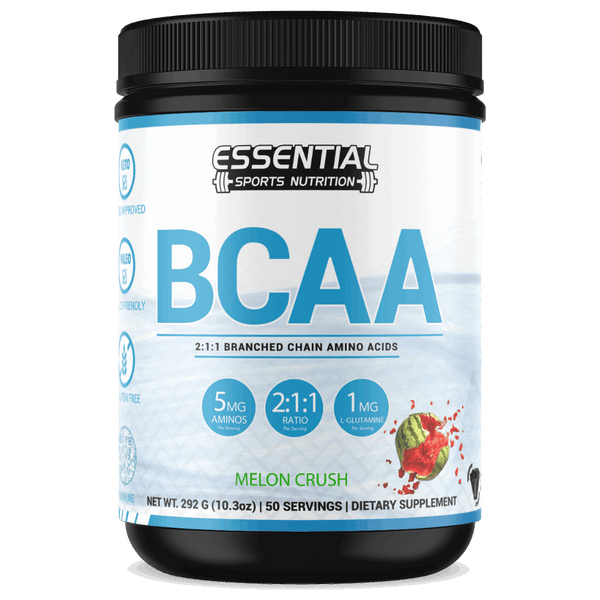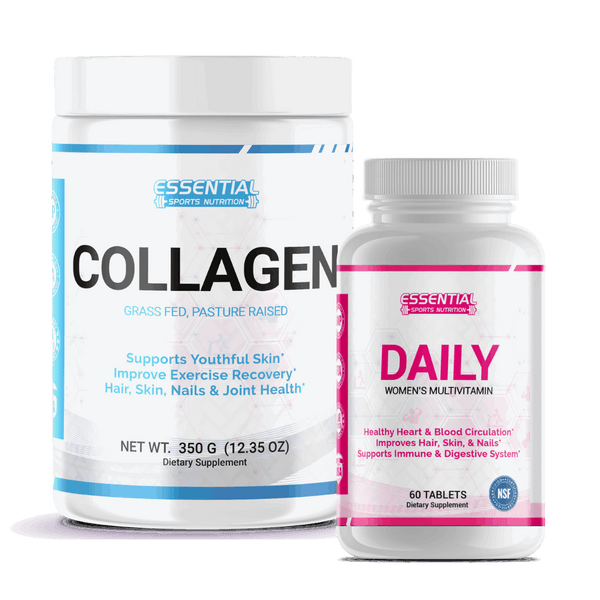Understanding Incomplete Protein Sources and Their Importance in Your Diet
Many people worry about getting enough protein, especially if they eat mostly plants. Incomplete protein sources might not have all nine essential amino acids our bodies need. This article will show you how these proteins still play a crucial part in your diet and how to combine them correctly.
Stay tuned for helpful tips!

Key Takeaways
- Incomplete proteins are found in plant foods like beans, nuts, and grains. They don't have all nine essential amino acids.
- You can get all the amino acids your body needs by mixing different incomplete proteins, such as beans with rice or peanut butter with whole wheat bread.
- Plant-based proteins also offer other health benefits. They have fiber, vitamins, and minerals good for your heart and weight management.
- Vegetarians and vegans can meet their protein needs with plant-based foods by eating a variety of them throughout the day.
- Daily protein needs depend on how much you weigh and how active you are. Most people need about 0.36 grams of protein per pound of their body weight.
What Are Incomplete Proteins?
Incomplete proteins are foods that don't have all the essential amino acids your body needs. These often come from plants like beans, nuts, and whole grains.
Definition and Characteristics
Proteins are made of amino acids. There are 20 different amino acids that join to make all types of proteins. Our bodies can make 11 of these from scratch, but we need to eat food to get the other 9.
These 9 are called essential amino acids. Incomplete proteins don't have at least one of these essential amino acids.
Some foods like legumes, nuts, seeds, and grains have incomplete proteins. They miss one or more essential amino acids that our body needs. For example, beans might lack methionine but have plenty of lysine.
Conversely, grains might be low in lysine but high in methionine. Every protein source is unique.
Common Sources: Legumes, Nuts, Seeds, and Grains

Legumes, nuts, seeds, and whole grains are key sources of incomplete proteins. These foods include beans, lentils, peanuts, almonds, sunflower seeds, and brown rice. One cup of cooked lentils has 17 grams of protein.
Chickpeas give you 16 grams per cup when cooked. Black beans offer 12 grams per cup after cooking.
These plant-based foods add variety to meals while providing essential nutrients besides protein such as fiber and vitamins. For vegetarians and vegans, these sources are vital for a balanced diet.
They also help in reducing the intake of red meat, which can lower the risk of heart disease and colon cancer.
Importance of Incomplete Proteins in Diets
Incomplete proteins play a key role in diets, especially for those who prefer eating plant-based foods. These proteins give us important nutrients, and help meet dietary needs without animal meat.
Nutritional Benefits of Incorporating Diverse Plant-Based Proteins

Eating different plant-based proteins fills your body with many good things. Foods like beans, nuts, seeds, and whole grains have lots of nutrients. They are not just about protein.
These foods also give you fiber, vitamins, and minerals. For example, chia seeds are rich in omega-3 fats, which are good for your heart. Quinoa has all nine essential amino acids that our bodies cannot make on their own.
Having a mix of these proteins can help you stay healthy and fit. Eating various plant proteins daily means you don't miss out on the crucial building blocks for your muscles and bones.
This way of eating supports weight loss, too, because it makes you feel full longer without eating too much food.
Role in Vegetarian and Vegan Nutrition

Vegetarian and vegan diets often rely on plant-based foods for protein. These diets do not include animal products, which are common sources of complete proteins. Vegetarians and vegans can use quinoa, buckwheat, and hempseed because these foods have all the amino acids a body needs.
For those who don't eat meat or animal products, getting enough protein is important. This means they must find different ways to get their protein from plants.
To make sure they get all the amino acids, vegetarians and vegans can combine incomplete proteins like beans with rice or peanut butter with whole wheat bread. This approach ensures a diet rich in various nutrients without relying on meat.
Eating diverse plant-based foods throughout the day is key to meeting nutritional needs without animal products.
Combining Incomplete Proteins
To make sure you get all the amino acids your body needs, mix different plant foods. Eating rice and beans together is a good way to do this.
Strategies and Examples of Complete Proteins
Combining incomplete proteins helps meet your body's needs for all the essential amino acids. This is crucial in plant-based diets, especially for vegetarians and vegans. Here are strategies to form complete proteins:
- Eat beans and rice together. They complement each other by providing the amino acids that the other lacks.
- Mix legumes with seeds or nuts in a meal. For example, sprinkle almond slices over a lentil salad.
- Combine grains with legumes in your dishes. A tasty example is pairing whole-grain wheat bread with peanut butter.
- Use soy products like tofu and edamame as a meat alternative. Soy offers a complete protein on its own.
- Have different protein sources throughout the day. If you have cereal grains at breakfast, enjoy legumes at lunch and seeds or nuts for a snack.
- Enjoy veggie burgers made from a mix of beans, nuts, and whole grains. Many store-bought options or recipes ensure a complete protein package.
- Add hemp seeds to your oatmeal or smoothie bowls. Hemp seeds are nearly complete proteins and can enhance other plant-based protein sources.
- Create meals that feature both dairy (if not vegan) and plant-based proteins, like a quinoa salad with feta cheese cubes.
- Experiment with meat alternatives like seitan, which is made from vital wheat gluten and often combined with soy sauce to improve its amino acid profile.
- Beef up your pasta dishes by adding plant-based protein sources such as chickpeas or lentils to the sauce.
Following these strategies ensures your diet includes all necessary amino acids without relying solely on animal-based proteins.
Examples of Effective Combinations

Eating various plant-based foods gives your body the protein it needs. You can get all essential amino acids by combining different incomplete proteins.
- Beans and rice: A classic dish that is part of many cultures' diets. Together, they make a complete protein.
- Peanut butter on whole wheat bread: This snack combines grains and nuts, filling in each other's missing amino acids.
- Hummus and pita bread: Chickpeas and sesame seeds in hummus paired with wheat in pita offer full protein benefits.
- Lentils and barley soup: Lentils mixed with barley create a hearty meal that provides a complete set of amino acids.
- Spinach salad with almonds: Leafy greens like spinach paired with nuts such as almonds cover all essential nutrients needed.
- Quinoa and black beans: Quinoa nearly has all amino acids, but pairing it with black beans ensures you get enough lysine, completing the profile.
- Oatmeal topped with hemp seeds: Oats combined with hemp seeds give you a breakfast rich in quality protein.
- Corn and beans salad: This combo fills any gaps in each other’s amino acid profiles for a nutritious meal.
- Stir-fried tofu with rice: Firm tofu brings high-quality protein to the table, which rice complements well.
- Vegetarian chili made with beans and cornbread on the side: The legumes in chili, together with the maize in cornbread, offer a comforting bowl of complete proteins.
These pairings show how mixing different food kinds can meet your dietary needs for proteins without eating meat or animal products.
Daily Protein Requirements

Knowing how much protein you need every day keeps your body healthy. It depends on your age, gender, and how active you are.
Guidance on Protein Intake Based on Dietary Needs
Guidance on protein intake varies based on individual dietary needs. Daily recommendations ensure healthy body function. Here is a breakdown:
| Group | Daily Protein Intake |
|---|---|
| General Population | 0.36 grams per pound of body weight |
| Moderately Active Adults | 57.6 grams for a 160-pound person |
| Meal Protein Absorption Limit | 25 to 40 grams |
| Active Adults | 1.2 to 2 grams per kilogram per day |
This table shows different needs. Some people move a lot. They need more protein. Others might not be as active. They need less. Protein helps our bodies in many ways. Eating the right amount is key.
Conclusion

Understanding incomplete proteins helps us eat better. These proteins come from plants like grains and beans. They are part of a healthy diet. We can mix different types to get all the amino acids our bodies need.
This is good for everyone, especially people who don't eat meat. Making smart choices about protein keeps our bodies strong.
Complete and Incomplete Proteins FAQs
Q: What is the difference between complete and incomplete proteins?
A: The difference between complete and incomplete proteins lies in their amino acid profiles. Complete proteins contain all nine essential amino acids that your body cannot produce on its own, while incomplete proteins lack one or more of these essential amino acids.
Q: What are some examples of complete protein sources?
A: Complete protein sources include animal-based foods such as meat, fish, dairy products, and eggs. Some plant-based options, like quinoa and soy, also qualify as complete proteins.
Q: How can I combine incomplete protein foods to make a complete protein?
A: You can combine different incomplete protein foods to create a complete protein. For example, pairing rice with beans or peanut butter with whole grain bread provides the essential amino acids your body needs.
Q: How much protein do I need in my diet?
A: The amount of protein you need varies based on factors like age, sex, and activity level. Generally, adults should aim for about 46-56 grams of protein per day, but athletes or those with higher activity levels may require more.
Q: What are some protein-rich foods that are considered incomplete proteins?
A: Some incomplete protein foods include nuts, seeds, legumes, and grains. While they may not contain all essential amino acids, they are still valuable sources of protein in your diet.
Q: Why is protein quality important in my diet?
A: Protein quality is important because it determines how effectively your body can utilize the protein you eat. Complete proteins are generally of higher quality as they provide all essential amino acids needed for various bodily functions.
Q: How can I ensure I get enough complete proteins in my diet?
A: To ensure you get enough complete proteins, include a variety of protein sources in your meals. Incorporate animal-based foods and consider plant-based options that offer complete proteins, or combine incomplete proteins to achieve a complete amino acid profile.
Q: What is the significance of the term "complete proteins vs incomplete proteins"?
A: The term "complete vs incomplete proteins" highlights the distinction between protein sources that provide all nine essential amino acids and those that do not. Understanding this difference can help you make informed dietary choices regarding your protein intake.
Q: Can I get complete proteins from plant-based diets?
A: Yes, while most plant-based foods are considered incomplete proteins, there are exceptions like quinoa and soy. Additionally, by combining various plant proteins, you can create meals that provide a complete amino acid profile.




























